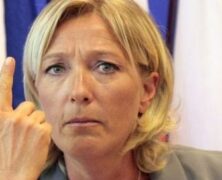The past couple of years have seen meteoric rises of the political extremes; we have seen the likes of Syriza (the Greek socialists) ascend to power under Tsipras and more recently a bloc of leftists in Portugal. Simultaneously, the far-right has also gained popularity: many cite the examples of Golden Dawn in Greece, Geert Wilders in the Netherlands, and Nigel Farage’s UKIP in the UK. And amongst these is one of the original “far-right” and “bigoted” and “racist” of all European parties: the infamous Front National in France. The Front National (FN) was founded by Jean-Marie Le Pen in the early 1970s as just another small political party. Influenced by the nationalist Action Française, FN gradually moved to its extremest incarnation. Immigration and racism soon became entwined in party doctrine, FN espoused a France where immigrants from North Africa were to be returned to their native lands and immigration from such areas ended. For many years, FN remained a minor party, seldom troubling the more mainstream parties in France. Le Pen cut a divisive figure, one who could never realistically ascend to the French presidency, a position he coveted. In 2011, he stood aside and was replaced at the top by his daughter, Marine. Le Pen Senior remained in the shadows witnessing his daughter change the party’s xenophobic image to a much more republican one whereby the traditional secular values were to be defended first and foremost; the previous racism which had been associated with FN was shed. It hung on, and still does. Earlier this year, Marine Le Pen was involved in a spat with her father over his alleged remarks that the Holocaust was a “detail” of World War Two. Marine wanted a retraction but Jean-Marie refused. In the end daughter had to...
A Beautiful Life
posted by Cloud
While at Arles, Van Gogh tore his pants and used them as a canvas. He improvised reed pens and drew on the material. He was aware that he was broken, damaged. Art was a means for him to join the world, to manage. He sat in fields in Arles and painted “A View of Arles with Irises in the Foreground.” What could be simpler? Most of his paintings have similar titles: “Irises;” “Almond Blossom;” “Wheatfield with a Reaper;” “Cypresses and Two Women.” I imagine the silence of his work, the patience and the hope that he’d be okay, at least for today. When inspiration didn’t come so easily he’d ask his brother to send to him copies of paintings by Millet and he’d paint them; one such endeavour is known as “The Sheepshearer, after Millet.” His brother Theo loved him and supported him, perhaps understanding that without his paintings, Vincent would be destroyed. Vincent wrote him letters, articulate and tender, and they are a great example of brotherly love. He ended his life in a village outside Paris. His last painting is called “Tree Roots;” later that day he walked into the countryside and shot himself. Then he walked back and spent the evening talking and smoking with his landlord even though he was in great agony. On July 29 1890, he died in his brother’s arms. He said, “I want to die like this.” The local priest refused to bury him because he was a suicide so they waked him at his little hostel where he had finished 80 paintings in 70 days. One of his last paintings is called “Wheatfield with Crows,” and it depicts a wheatfield and a winding road and of course some crows. But what the title doesn’t advertise is the troubled blue sky – dark, uneven, laden with tears. I wonder if he painting it with the decision to end his life settling on his shattered soul like rain on a campfire. Six months later, Theo died too. Vincent is reputed to have said, “Art is long and life is short.” His life is a beautiful testament to such truth....


